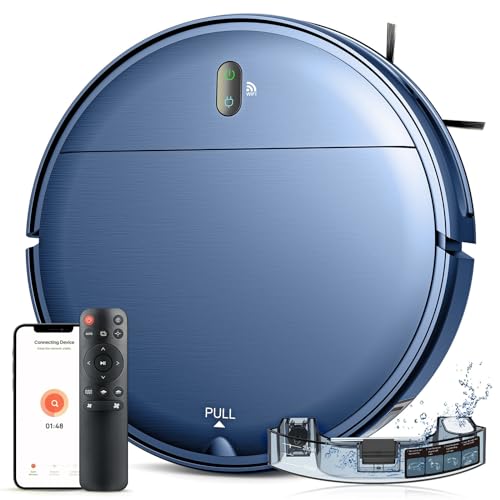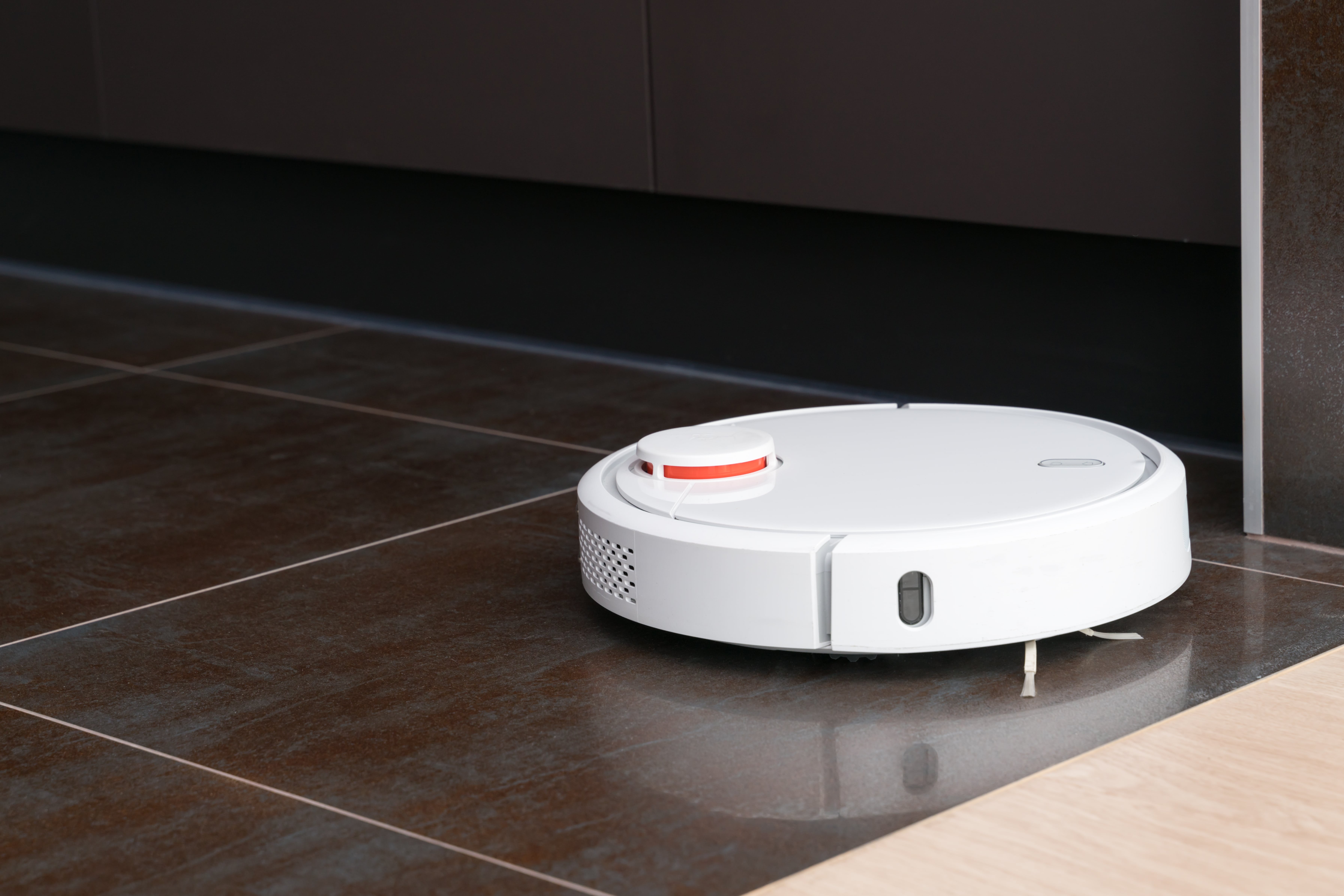11 Methods To Totally Defeat Your Good Robot Vacuum
페이지 정보
작성자 Sara 댓글 0건 조회 87회 작성일 24-02-16 15:58본문
 What to Look For in a Good Robot Vacuum
What to Look For in a Good Robot VacuumA good robotic vacuum can help you stay on top of pet hair, lint, and dust on a daily basis. Many robot vacuums work with applications that allow you to schedule cleaning sessions. You can also set virtual boundaries, or 'walls,' to ensure that the vacuum stays away from areas that you don't want cleaned.
This smart vac-mop creates a map of your home's layout with its first run. It then stores the space to help you with future cleaning tasks. It has self-cleaning brush rolls and an extra-large dust bin that empties automatically.
Object Detection
When choosing a robot vacuum cleaner, select one that is able to pick up large items like toys and lamp cords as well as fine dust. This will ensure that the items don't get stuck in the roller brushes or left on your floor. This is especially important if you have pets or children, and you may have to clean the robot on a regular basis.
It's recommended to choose a model with an efficient motor and lots of suction power. This will enable it to be more effective in removing dust, pet hair and lint off carpets and hardwood flooring.
Another crucial aspect to consider is the size of your home. If you live in a large house you might want to select one that has multiple cleaning zones so that you can clean the entire house in one go. Certain models also include mopping functions that can be used to keep your floors looking fresh and clean.
Robot vacuums are tough, but they need to be cleaned properly and regularly. Regularly cleaning the rotating brushes and emptying the dust bin, and wiping your sensors will keep your machine working efficiently for many years. Many of the owners of robot vacuums that we have spoken with have owned the same machine for a decade or more (and have replaced motors, brushes and batteries along the way).
A basic robot will cost you less than a full-size vacuum cleaner, however they'll still do a great job of keeping up with dirt on the surface, pet hair and dust. You can use them to clean your floors several times per day. They aren't as technologically advanced and are more prone to get stuck or require manual intervention.
Object Avoidance
The most effective robot vacuums utilize cameras, sensors or lasers to navigate your home and prevent getting stuck or falling down the stairs. They are also able to avoid obstacles such as cords and furniture legs and some models will automatically return to their base or dock when they are running low on energy. The most expensive models usually feature mapping capabilities that allow them to remember the layout of your home and spend less time running into walls.
You don't have to spend a lot of money on the most expensive robotic vacuums. You can still find models that do an excellent job at picking up pet hair and dirt from hard surfaces such as tile, wood and low-pile rugs. They can also be capable of handling larger debris like metal screws and staples that are rusty or even abandoned toys. Some have a base that automatically empties itself, which is a great feature when you don't need to empty it after each cleaning session.
The majority of robotic vacuums have innovative features that make a standard stick vacuum seem prehistoric with features like scheduling, zone targeting, and the ability to control them with an app or a voice assistant such as Alexa. You can also set up cleaning zones and virtual walls' to block off areas where you do not want the robots to enter.
Some robotic vacuums, such as the Eufy 11S or my former top pick, Roborock S8, come with obstacle avoidance technology that will prevent them from tripping over cords or furniture. Some robot vacuums, like the iRobot Roomba j7+ have more advanced AI obstacle-avoidance technology that uses sensors, cameras and algorithms to stay clear of items like lamp cords as well as pet waste. It is a little bit more expensive than other bots that I've tested, but it does a fantastic job of avoiding obstacles and rarely is stuck or tripped when I'm working on my floor.
The irobot vacuum cleaner and mop J7+ was a fantastic obstacle avoidance robot vacuum & mop however it didn't always succeed in avoiding crumbs or dirt on my carpets. It also had a tendency to over-vacuum certain areas, resulting in a lot of extra dust in the filter, and an unclean home.
Smart Mapping
Some of the best robot vacuums have an app that can help you to customize cleaning settings and schedules, as well as view an outline of the floor area that the machine covers. This is a useful feature, and one that many competitors don't have. This lets you create profiles that will automatically start the robot at specific times, and keep it running regularly. For example, it could be cleaning the living room every day, or just before dinner.
A good app can also allow you to control your robot using voice commands. Certain models can be controlled by Amazon's Alexa or Google Assistant and can work completely hands-free, so you can say "start with a clean" or "change cleaning mode" without having to use the app.
For a truly hands-free experience, look for an option with a big dust bin that can withstand numerous cleaning sessions before needing to be emptied. You can also find models that are self-emptying, which takes some of the labor out of emptying the machine after each cleaning run.
If you're looking for a machine capable of doing more than just vacuum, you'll want to consider the possibility of a model which can mop your floors. These are typically larger than the robotic vacuums and come with a water tank inside which can store several cleaning sessions worth of dirt and debris prior to needing to be cleaned.
The most advanced robots generate their own maps of your home. They can even keep track of the layout from one cleaning to the next, which helps them avoid getting lost or trapped in corners. This can make a big difference in the efficiency of your robot vacuums because it won't be spending time returning to the beginning of the room whenever it encounters furniture or walls.
Our test participants found that the robots that had this feature were very efficient. They could watch TV or complete other tasks while the robot cleaned. Some of these models utilize laser navigation and can create an exact map of your home, meaning you can program them to clean only the bedroom after dinner or every room in the house when you're at work.
App Control
It is recommended to select the vacuum that comes with an app that is mobile in case you wish to alter the frequency of cleaning and select a cleaning mode. You can also see the status of the vacuum and the state of its dust bin in the app. Some of the most effective robot vacuums are controlled by voice with Alexa, Google Assistant or Siri Shortcuts.
It is simple to maintain a robot equipped with the ability to wash the filter and a self-emptying container, especially when the filter is easily removed and rinsed. Another excellent feature is a powerful brush that can be found in corners and along baseboards, making it easier to remove dirt and hair. Some robots are more adept in avoiding chair legs than others. Others come with an automatic cleaning system that cleans brushes to avoid obstruction.
Some robot vacuums come with navigation tools that assist them in navigating around obstacles and learn your home. The top models utilize sensors and cameras to recognize obstacles such as stairs, furniture and cords. Cheaper models may utilize boundary strips to mark areas that you don't wish it to enter. Object avoidance is especially important for families with young children who throw socks and toys scattered across the house, because it allows your robot to grab the objects instead of scattering them.
We're beginning to see more robots equipped with mops which are useful for those who have hard floors and need to regularly clean them. They have a water reservoir that is built into their chassis or as a separate component that you can swap in when ready to mop. They might need to be refilled more frequently than other types of robots, however they're perfect for homes with floors made of wood that aren't easily cleaned with a vacuum.
We've seen some impressive technology in these small robots and they're less expensive than you might think. You can find a quality one for less than $200, and it does a decent cleaning job on hard floors, while also navigating around the edges of carpets and rug. The robot can be programmed to clean a particular room at regular intervals. It can be controlled remotely through an app or by pressing buttons.

댓글목록
등록된 댓글이 없습니다.

